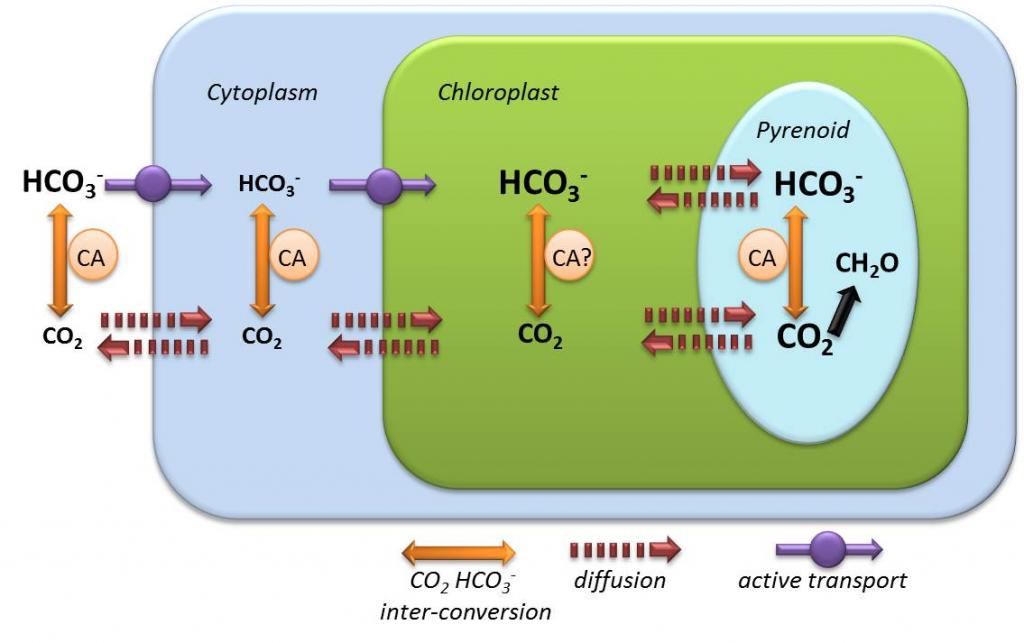
The concentration of CO2 in surface waters is insufficient to saturate the enzyme ribulose-1,5-biphosphate carboxylase-oxygenase (RubisCO) responsible for inorganic carbon fixation in practically all photosynthetic organisms. Various species of microalgae are known to compensate for low CO2 availability by operating different types of carbon-concentrating mechanism (CCM). We have shown that some diatoms can function as unicellular C4 plants; i.e., that they concentrate carbon by accumulating an intermediate C4 organic compound before CO2 fixation in their chloroplast. The result is a highly efficient CCM that allows diatoms to thrive under the low CO2 concentration of today’s surface ocean – a condition they have themselves created over the past 200 million years by exporting biomass to deep seawater. In all phytoplankton, carbonic anhydrases (CA), which catalyze the reversible conversion of CO2 to HCO3-, play a critical role in the efficiency of the CCM, although the full details of the biochemical steps remain to be elucidated. In some marine microalgae, the zinc metal center of carbonic anhydrases can be replaced by cadmium or cobalt, establishing a link between trace metal availability and inorganic carbon acquisition.



